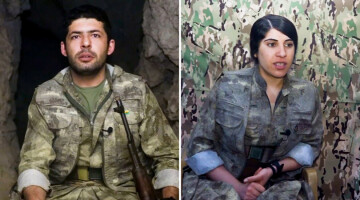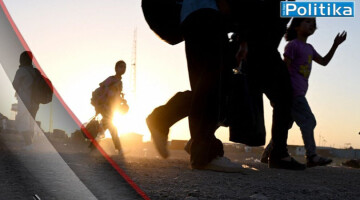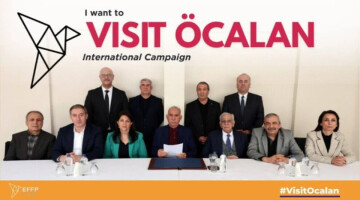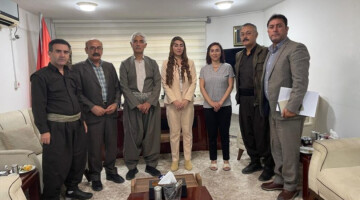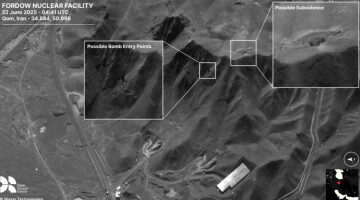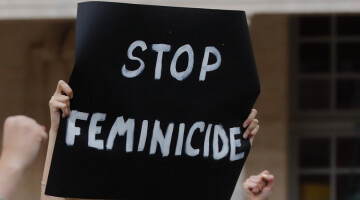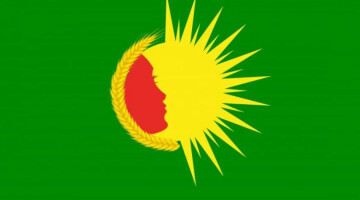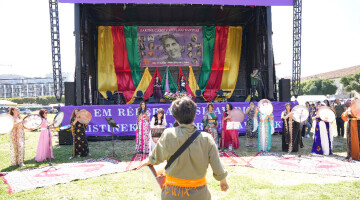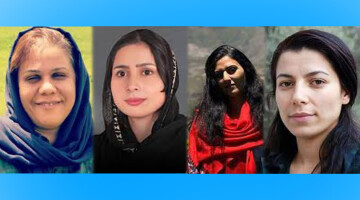Armenian Women's Union Coordination Member Anahit Kasabiyan stated that they will continue to struggle for the construction of a decentralised life in Syria where equality, justice and democracy will be ensured and all nations can live together.
The Armenian Women's Union, which strengthened its organisations with the paradigm of Kurdish People's Leader Abdullah Öcalan, continues its work uninterruptedly. ANF talked to Anahit Kasabiyan, Member of the Armenian Women's Union Coordination, about the organisation of the Armenian Women's Union, the participation of Armenian women in all areas of life before and after the revolution and their 2nd congress.
When was the Armenian Women's Union founded and what was its purpose?
Armenian women had forgotten their identity within different nations. They knew they were Armenians, but there was nothing more than that. For this reason, we tried to raise awareness by coming together with Armenian women in Raqqa, Deir ez-Zor and Hesekê for three months before the first congress. During this period, 80 seminars were held on the history, culture and identity of the Armenian community. Through these seminars, discussions on the content of the congress were held with the women who came together, and the regulations were discussed.
In fact, after these discussions, the draft of the system to be established for Armenian women emerged and the congress was held based on this preparation. With the slogan ‘The Armenian Women's Union resurrects itself after 107 years’, the Armenian Women's Union was declared at the 1st Armenian Women's Congress held on 30 August 2022. For the first time in 107 years, that is, after the Armenian genocide, an Armenian women's congress was taking place. We needed the Armenian Women's Union more than bread and water. A woman who does not live her identity, culture and does not know her history could face a new genocide at any moment. Therefore, I can say that we have guaranteed our existence with this union. In addition, Armenian women, who needed to be liberated from the male-dominated mentality, needed to organise with their own identity. In addition, it was a great danger for them to live with the cultures and histories of the society they lived in and the nations they lived with, but not to live their own history, culture and identity. Of course, most importantly, staying away from the developments in the Rojava Revolution, which is a Women's Revolution, living disconnected, not taking part in women's organisation would affect the development and transformation of Armenian women.
What was the life of Armenian women before 2012? What kind of participation was there in all areas of life?
Armenian women were involved in different fields before 2012. There was no situation that represented the Armenian people and kept their history, culture and identity alive. They had a position that was included in the system of the Ba'ath regime, was a part of this system and served this system. They were not in the struggle for change and transformation through the eyes of women or from the perspective of free women. They were subject to what existed. The bitter effect of the state system was effective on women, and it would not be wrong to say that Armenian women had no will. Such a picture was also reflected in social relations. In this context, Armenian women and community were indistinct in society and had lost their identity.
What kind of change took place with the revolution?
Historically, the Armenian community has gone through difficult times, lived in various geographies, and had the chance to protect, preserve and pass on its identity, culture and rights to new Armenian generations in the process. Before the establishment of the Armenian Community Council, we were involved in military, political and social activities, and we became stronger through organisation. These military, political and social activities greatly influenced the organisation of the Armenian community. The endeavour to form a strong community enabled them to preserve their own identity. The establishment of the Council with the revolution allowed this organisation to become stronger and more systematic. The Armenian community is now able to organise social events to keep their language, religion and traditions alive, thus ensuring social solidarity. There are approximately 130 political parties representing the so-called Armenian community worldwide. However, when we look at the regulations, researches and struggles of these parties, we do not see an approach that protects and observes the rights of the Armenian community. For this reason, as the Armenian community living in Northern and Eastern Syria, we will establish a political party led by women.
You said that you came together with many Armenian women and organised discussions and seminars. What were the views of Armenian women on the Rojava Revolution during these activities?
The Rojava Revolution was evaluated as a model that allows women to take an active part in political and military fields. The fact that the women's movement in Rojava co-operated with other ethnic and religious groups and encouraged solidarity was seen as an important step by Armenian women, and they were impressed by this approach. Such interaction offered an opportunity for peace and harmony between different communities. The fact that women in Rojava took an active role in the military arena and participated in the war was inspiring for many Armenian women. This reinforced the presence of women in the struggle for peace and freedom and set an example for the younger generations. The wind of change created by the Rojava Revolution in the social structure strengthened Armenian women's belief that similar transformations should take place in their own community as well. There has been an awareness that the role of women in social life needs to be redefined. Armenian women think that the women's movement in Rojava also sets an example in terms of protecting and expressing their own cultural identity. The endeavour to keep the cultural richness of different ethnic groups together allows their own culture to take part in this process.
What kind of road map do you have as Armenian women for Syria-Syria dialogue?
As the Armenian community and women, we are involved in the activities for Syria-Syria dialogue. We have closely witnessed the sacrifices and bloodshed in Northern and Eastern Syria and the Armenian people have played a major role in this revolution. For this reason, we are directly involved in the activities and solutions offered to resolve the crisis. We will continue our struggle for the construction of a decentralised life in Syria where equality, justice and democracy will be ensured and all nations can live together. Due to the current crisis, beyond the institutions and organisations representing the Syrian people, many states have settled in the region in line with their own interests. This is being done in line with plans to disrupt the integrity of Syria and to disintegrate its unity.
How do Armenian women living in Northern and Eastern Syria evaluate the paradigm of Kurdish People's Leader Abdullah Öcalan?
All Armenian women living in the region are organising and strengthening themselves in line with Leader Apo's (Abdullah Öcalan’s) philosophy. Leader Apo's ideas and thoughts, his predictions, the paradigm he developed was not only for the Kurdish people. It is a paradigm that appeals to all peoples. Armenian women argue that Leader Apo's ideas will bring a solution for the peoples of the Middle East and the world. They realise that the key to the solution lies with Leader Apo. Therefore, ensuring the physical freedom of Leader Apo is our priority and, especially, his physical freedom is vital for women. The solution to the persecution and genocide against the Armenian people also lies with Leader Apo.
The 2nd Congress of the Armenian Women's Union was held on 7 January. What kind of transformation was achieved with the congress?
First of all, a coordination was needed for the Armenian Women's Union to carry out healthier and stronger work. Therefore, the Coordination of the Armenian Women's Union was established. It was decided that the representative offices of the Armenian Assembly and the Armenian Women's Union would be located in the Autonomous Administration offices. Small economic projects will be established for Armenian women to develop themselves and take their place in society. In the Armenian Language Course to be established, ideological education for women will be highlighted. The participation of Armenian women in the Armenian Military Council will be strengthened and their participation in the Armenian political party to be established will be ensured. We will consider this year as a year of education in order to achieve better development and transformation in the intellectual dimension. In addition, an Armenian Women's Union will be organised in Raqqa.


